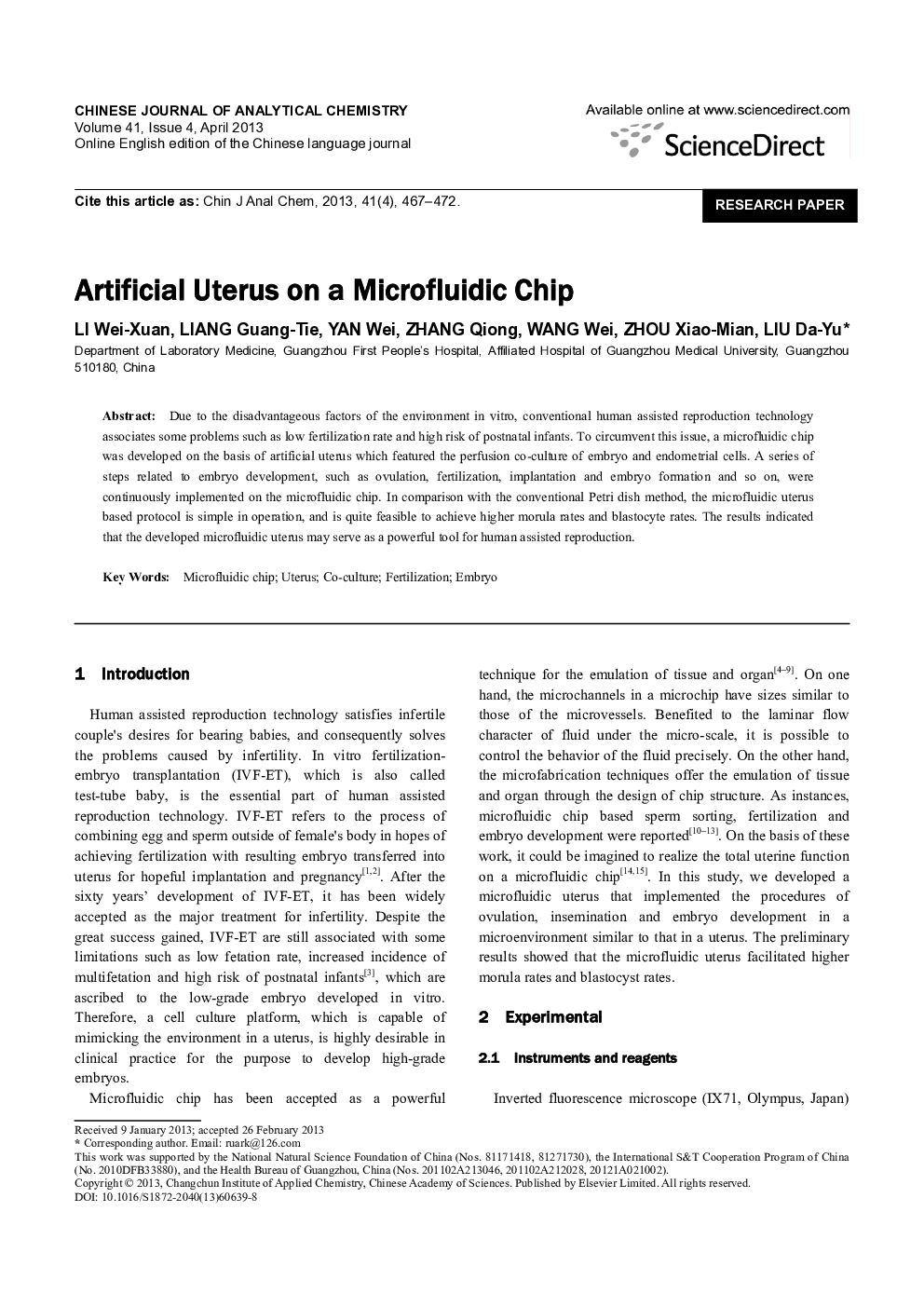| Article ID | Journal | Published Year | Pages | File Type |
|---|---|---|---|---|
| 1182270 | Chinese Journal of Analytical Chemistry | 2013 | 6 Pages |
Due to the disadvantageous factors of the environment in vitro, conventional human assisted reproduction technology associates some problems such as low fertilization rate and high risk of postnatal infants. To circumvent this issue, a microfluidic chip was developed on the basis of artificial uterus which featured the perfusion co-culture of embryo and endometrial cells. A series of steps related to embryo development, such as ovulation, fertilization, implantation and embryo formation and so on, were continuously implemented on the microfluidic chip. In comparison with the conventional Petri dish method, the microfluidic uterus based protocol is simple in operation, and is quite feasible to achieve higher morula rates and blastocyte rates. The results indicated that the developed microfluidic uterus may serve as a powerful tool for human assisted reproduction.
Graphical abstractA microfluidic chip was developed on the basis of artificial uterus which featured the perfusion co-culture of embryo and endometrial cells. A series of steps related to embryo development, such as ovulation, fertilization, implantation and embryo formation and so on, were continuously implemented on the microfluidic chip.Figure optionsDownload full-size imageDownload as PowerPoint slide
